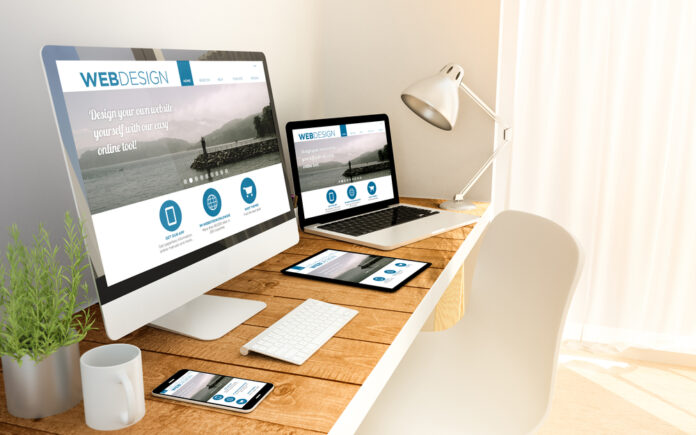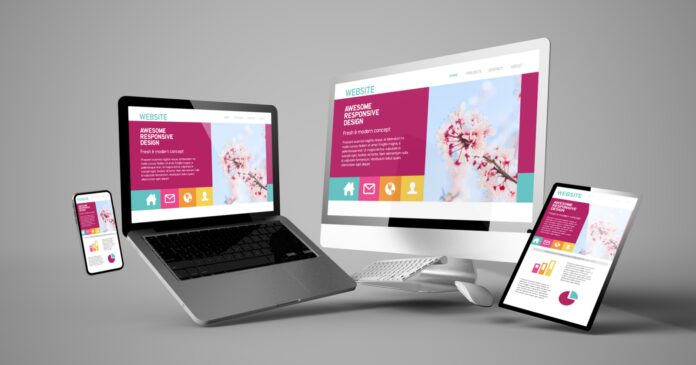
Web design is a booming business. It has been ranked as one of the best jobs if you’re looking to be your own boss and succeed at self-employment in 2021. With consumers relying more and more on the web to inform their decisions and companies looking to increase visibility and brand identity, this trend is more than likely to continue. However, that also means that competition will likely get ruder and ruder.
What separates flash in the pan web designers and those with staying power is not only the ability to adapt to market demands but the ability to foresee and anticipate them.
With that in mind, in this article, we’ll take a look at some current trends in web design and determine if these trends are likely to continue or if they are merely passing fancies.
Less Is More
One of the more striking differences in websites when comparing those of today to those of fifteen or twenty years ago is just how busy older sites looked. This is especially true of websites from the early days of the internet. It’s as if each website was seeking to show off all the technological capacities of the day.
Contemporary websites, on the other hand, are far more focused on what they hope to achieve, the message they are trying to convey, and the brand identity they are seeking to promote. The temptation is still there for web designers to flex all the design and technological capabilities available to them – perhaps the temptation is stronger than ever, as technology can do so much more than it could twenty years ago.
But the good web designers, those who know how to stay current, are able to resist the temptation, limit the scope of what they are trying to accomplish, and keep things as simple as possible.
Speed and Functionality – The Top Priorities

In keeping with the contemporary web design approach of ‘less is more’, today’s web page should have a very specific goal and one which does not require the user to spend a lot of time on the site in order to achieve this goal. While, of course, there are exceptions to this philosophy, in general, a website wants to satisfy the user as quickly as possible, provoke the intended action from the user and move on.
Not only is this the goal of the website, according to Times International but it is also the goal of the user. Today’s user expects near-instant gratification and he or she will quickly lose interest if they feel that their needs or expectations are not being met in a timely fashion. What this means is that there is a high premium placed on page speed and load time. Any features incorporated onto a site need to factor in how they will affect the page speed and load time. If the expected effect is adverse, you may need to reevaluate how important those extra features are.
Page speed and load time are not only critical factors to the UX but they also play a major role in search engine results. As websites always seek to improve their visibility, SEO optimization is a high priority, thus page speed and load time have seen their importance rise in recent years.
It is unlikely that once users become accustomed to quick results they will revert back to accepting longer waits – even if the wait is minimal and the features on the site would otherwise be impressive. At least until a time when page speed and load time are universally excellent, placing page speed and load time as high priorities is a trend that is likely here to stay.
Infinite Scroll vs Pagination

It would be pointless for a site to load all of its content in one go for a user to peruse at their leisure. That would take too much time. Instead, a site will only load the content the user needs at first and then load more content as the user continues to peruse the site.
This effect is most often achieved in one of two ways – infinite scroll, where new content is loaded as the user scrolls down the page; and pagination, where the content is spread out onto a predefined number of pages with the content loaded as the user clicks on each subsequent page.
Which technique is right for your web page should ultimately come down to speed. The safe answer is that whichever version loads faster is going to be your best option. However, some websites that rely on binging or an ‘addictive’ user experience might prefer infinite scroll as it feeds off this sort of user behavior better than pagination does.
An Interactive Medium
It is no longer enough for a website to simply provide the user with information or give them insight into a brand. Contemporary websites seek to engage with the user. Not only do interactive sections allow users to engage with a particular website, but when done correctly, they can provide the site with valuable, actionable data on their users, their habits, and their preferences.
Some examples of interactive sections that also double as data collectors include:
- Quizzes
- Polls and surveys
- Calculators or conversion programs
- Product customization programs
These kinds of interactive sections of a website give the user a certain amount of control over their experience. When a user feels they have control over their experience, they are more likely to trust the site and more likely to carry out the action the site is intending for them to do.
Micro Animation – Escape Stagnation

Often a website will want to present itself as a vibrant, evolving platform. A page that has no motion, and no evolution is far less interesting to the user. It appears as a snapshot of the past rather than a door into the present – a more dynamic presentation.
This effect of motion and vibrancy can easily be achieved by micro animation. This can come in the form of a simple logo changing color or form or by a product on a product page rotating so that the user can view the product from various perspectives.
There is an immediacy to popular websites of today. They invite users to experience a moment – a fleeting moment that can’t necessarily be captured and experienced later but one that must be seized upon now. Micro animation along with countdown clocks and real-time message boards go a long way to creating that important effect.
The Takeaway
By taking a look at popular web designs over the years it is quite easy to spot the trends:
- Less is more: the simpler presentation is the more elegant and the more effective
- A focused, singular objective: a website shouldn’t try to do too much; it should have a focused objective and should work to steer the user toward that objective
- The archive is archaic: in the past, websites operated as a sort of archive of information. Today, websites aren’t attempting to give users a glimpse into the past but rather to give users an invitation to a moment in the present.











